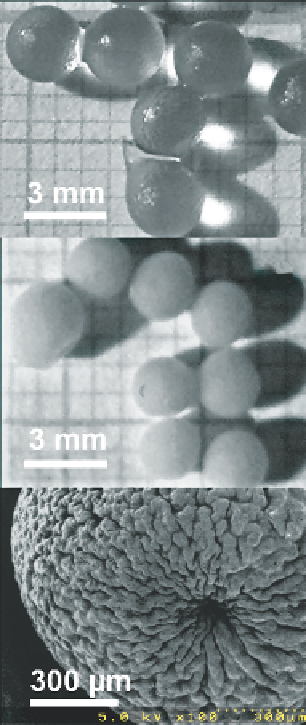Biomedical Engineering Reference
In-Depth Information
a
b
c
Cu
2+
alginate beads: (a) hydrogel beads; (b) so-called aerogel after 22 h ageing; (c) SEM image
of aerogel. Adapted with permission from Di Renzo et al.(
2005
) © 2005 American Chemical
Society.
Figure 11.9
and the core shell structure of Cu-alginate beads and a section of this crust. The outer
shell is formed by a
by the radial retraction of the gel.
Below the dense shell, the core presents a thick radial pattern of shafts. In
Figure 11.10
,a
cross-section normal to the shaft axis is shown. The average diameter of the shafts is
about 10 μm. After taking into account the shrinking of the bead and the formation of the
shafts, the dry gel volume is nearly half the overall volume and the void fraction of the
dried gel is still higher than 45%.
In these examples, the drying process and gelation conditions created the core-shell
microspheres containing radial shafts in the depth of the beads. The transport properties
of such core-shell systems with radial shafts are improved relative to untreated micro-
capsules, with the additional advantage of a large internal surface for stabilizing active
groups.
flattened layer of
fibrils,
'
densi
ed
'

Search WWH ::

Custom Search